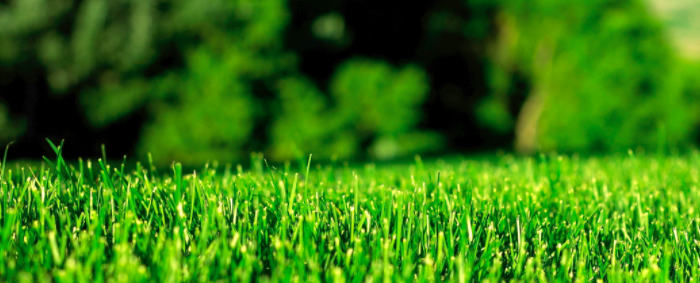
Best lawn fertilizers
Best lawn fertilizers are the fertilizers which are best suited for the lawn conditions and do not have any adverse effect on the vegetation and the organisms present there. The fertilizers are added into the lawn to improvise the soil and environment conditions which will become favourable for the growth of different grasses in the lawn. The dose and timing of fertilizers will decide the growth and development of grass of the lawn. The health of the lawn depends mainly on the percentage of organic matter and the condition of the soil of the lawn. The quantity of fertilizer added to the lawn is decided by the soil conditions i.e. acidic or basic or alkaline soil. The best time for using the lawn fertilizers is the fall rather than early spring. This will reduce the incidence of diseases in the summer season and the shot growth is promoted over the earlier leaf growth. The various essential elements for the development of lawns are listed in the table below:
| Used in relatively large amounts |
Used in relatively small amounts |
|
| Mostly from air and water | Mostly from air and water | From soil solids |
| Carbon Hydrogen Oxygen |
Nitrogen Phosphorus Potassium Sulfur Calcium Magnesium |
Iron Manganese Boron Molybdenum Copper Zinc Chlorine Cobalt Nickel |
| *From N.C. Brady and R.R. Weil. 2002. The Nature and Properties of Soils (13th Edition). | ||
When to fertilize a lawn or turf grass the weather conditions should be given utmost important for achieving the maximum effectiveness of the applied fertilizers. Also, go for soil test before the application of fertilizers in the lawn. Also, use the proper grade of NPK fertilizers after the soil test. For each of the application, the fertilizers are to be applied n two directions. Water the lawn immediately after the fertilization. Also, use the lawn fertilizers in a combination along with the herbicides for reducing the labour costs and the initial cost of investment in lawn formation. Apply the liquid fertilizers in lawn ahead of dry fertilizers as this will make easy use of fertilizers along with the herbicides or with irrigation water. There is no need of applying phosphoric fertilizers in the lawn as it is present in the soil in good amounts. The different fast and slow release nitrogen fertilizers for lawn and turf grass are listed below:
| Quick-release | Slow-release |
|
|
Advantages of using quick release nitrogen fertilizers on the lawn over the slow release fertilizers:
- Immediate availability of nitrogen to the plants.
- Rapid response of plants to the fertilizers applied.
- Less expensive and economic in use.
- More efficient use of fertilizers against the slow release fertilizers.
The different best lawn fertilizers are listed below:
- Organic fertilizers:
-
- Animal manure (cow, horse or poultry manure): It will act as a soil conditioner and provides an NPK ratio of 2 to 4-1 to 3-2.4 to the lawn vegetation.
- Balanced fertilizers (i.e. available in proportions of 10-10-10 or 5-5-5): It will provide all the nutrients in equal proportions to the plants, trees, herbs, shrubs, climbers of the lawn.
- Blood meal: It is a good source of rapid availability of nitrogen to the lawn vegetation. It will provide NPK in the ratio of 13-2-1.
- Bone meal: It will provide rapid availability of phosphorus. It will also increase the soil pH and NPK availability is provided in the ratio of 3-12-2 by it.
- Compost (homemade or commercially prepared): It will provide NPK ratio of range 1 to 2- .5 to 1-1 to 2 to the lawn. It is of the best use in vegetable gardens.
- Cottonseed meal: It is a slow release fertilizer and provides NPK ratio of 6-2-2 to the plants of lawn.
- Fish meal (i.e. emulsion or hydrolyzed fish): It will provide NPK ratio in the range of 4 to 10-4-1 to 4 in the lawn. These can be used as a foliar spray in the lawn.
- Liquid seaweed: It is a good source of potassium and some micronutrients. NPK ratio provided by it is 4-2-3. It will also increase plant hardiness and resistance to the adverse environment conditions.
- Wood ash: Its NPK ratio is 0-1-7 and it shows it is a very good source of potassium to the lawn.
- Worm castings: It is used for increasing the soil structure and well balanced as the fertilizer for the lawn. Its NPK ratio is 0.5-0.7-0.3.
- Inorganic fertilizers:
-
- Acidifying soluble: It is a good source of nitrogenous fertilizers for those plants which prefer acidic soil for growth and development. Its NPK ratios are 30-10-10.
- Ammonium nitrate: It is used in lawns where plants are of fast-growing nature and have green leafy structure. Its NPK ratios are 35-0-0 and it is a rapid nitrogen providing fertilizer to the lawn vegetation.
- Balanced fertilizers: It is available in different proportions like 10-10-10 or 5-5-5 which provides equal proportions of all nutrients to the lawn trees or plants and helps in their balanced growth.
- Liquid or chelated iron: It is good for use in poorly drained soils or in compacted soils which shows yellowing or iron deficiency in the plants. Its NPK ratios are 15-4-6.
- Superphosphate: Its NPK recommendations are 0-20-0 or 10-5-10. It is good for promoting the fruiting and flowering in the lawn vegetation. It is good for container grown plants, flowers, rooted perennials etc.